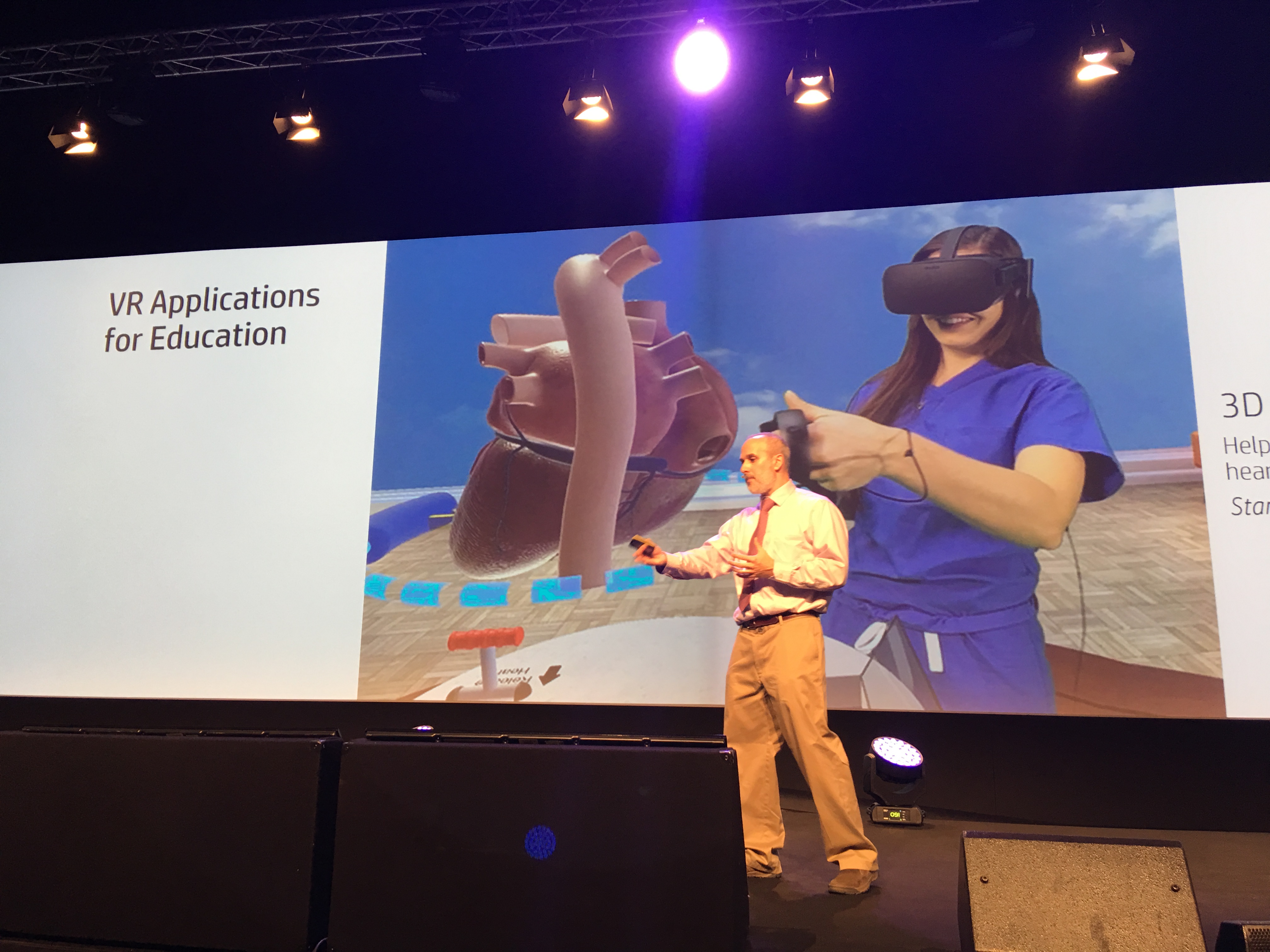Bett 2018: Virtual and augmented reality gaming could help students learn more about the real world
Engaging and immersive games could boost education, but there has to be a learning context


Augmented reality and virtual reality gaming can be used in education to provide a challenge for students and enable them to gain experience they wouldn't normally have, according to a scientist.
Speaking at the Bett Show, currently being held in the Excel centre in East London, Eric Klopfer, director of Scheller Teacher Education Program, The Education Arcade, at MIT, told delegates that in his research, he found gaming can be used for education as most students enjoy solving problems.
"Gaming is hard fun. Pleasant frustration is where the enjoyment of gaming comes from," he said.
But for educational games to resonate with students, they have to have multiple goals. They have to feature interesting decisions and these decisions have to have consequences. There should also be clearly defined goals, measurable feedback and a coherent system of rules.
In an educational context, Klopner said games should look at the whole learner as well as factoring in the social nature of learning in schools and colleges. The design of such games should also take the connection between learners knowledge, skills and practices very seriously.
"Resonant design honours the fact that knowledge and skills and the players we are trying to enchant and educate are all part of society, and are the relationships between players," he said.
Augmented reality and virtual reality can help students in two very different ways, according to Klopner. "Virtual reality help you experience a new world. Augmented reality helps you experience this world in a new way."
Get the ITPro daily newsletter
Sign up today and you will receive a free copy of our Future Focus 2025 report - the leading guidance on AI, cybersecurity and other IT challenges as per 700+ senior executives
He added that with virtual reality, games shouldn't focus on mimicking real-world things such as a virtual chemistry lab. Rather, they take students to places where they wouldn't normally go. One example was shown to delegates was a picture of a family caught up in conflict. Such games can teach about having empathy for others less fortunate but in safer surroundings. Another example of virtual reality in education was to show a 3D structure of the heart to teach people about heart defects.
Main image credit: IT Pro
Rene Millman is a freelance writer and broadcaster who covers cybersecurity, AI, IoT, and the cloud. He also works as a contributing analyst at GigaOm and has previously worked as an analyst for Gartner covering the infrastructure market. He has made numerous television appearances to give his views and expertise on technology trends and companies that affect and shape our lives. You can follow Rene Millman on Twitter.
-
 Bigger salaries, more burnout: Is the CISO role in crisis?
Bigger salaries, more burnout: Is the CISO role in crisis?In-depth CISOs are more stressed than ever before – but why is this and what can be done?
By Kate O'Flaherty Published
-
 Cheap cyber crime kits can be bought on the dark web for less than $25
Cheap cyber crime kits can be bought on the dark web for less than $25News Research from NordVPN shows phishing kits are now widely available on the dark web and via messaging apps like Telegram, and are often selling for less than $25.
By Emma Woollacott Published